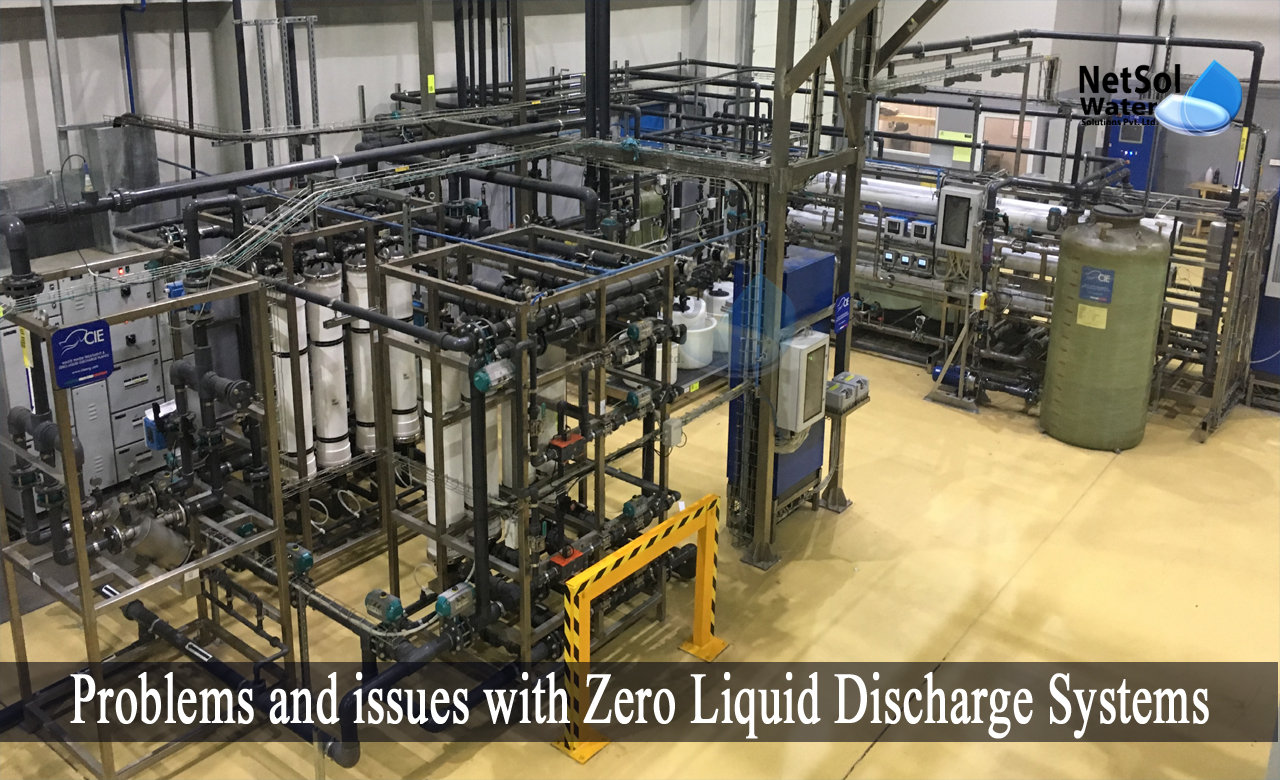What are the Problems and issues with ZLD Systems?
While it is impossible to examine every issue in detail due to the wide diversity of ZLD designs, a number of common issues are present in all of them. These frequent issues fall under a number of distinct categories. Several are of a general character and are independent of ZLD design, while some are more detailed.
These include issues with heat systems and pre-concentration systems, wastewater reverse osmosis and pretreatment, or, evaporators, brine concentrators, and brine crystallisers. It's challenging to pinpoint exactly what you might be experiencing, given the breadth of ZLD systems in use, and the variations in treatment depending on your sector.
Problems faced by ZLD systems
The main issues with zero liquid discharge systems are as follows:
Regardless of the ZLD equipment, addressing these issues can increase reliability, and capacity while decreasing maintenance.
· Corrosion
Understanding the causes and effects of corrosion is crucial, when performing specific ZLD steps, such as crystallisation and dewatering. Higher salt concentrations in the remaining liquor or brine, have the potential to damage the system's pipes, or other mechanical components. Spray driers can occasionally be useful, since they can reduce the solubility of some salts, but in general, it's best to utilize corrosion-resistant building materials, such as alloys made of nickel and titanium.
Again, much of the pollution that can lead to corrosion, in the thermal components of the ZLD process, needs to be handled based on the specific system, because scale build-up can also cause corrosion, and the loss of heat transfer. This intricate computation may involve the consideration of the chemical equilibrium, concentrations, heat output, and pressure.
· Clogging of RO membranes
Reverse osmosis (RO) is a crucial step in the ZLD process, but if hazardous solids aren't effectively removed during pretreatment before going on to RO, it's very probable that your RO membranes may become fouled at some point.
When your filter membranes become fouled, deposits build up as a result of pollutants like:
· Calcium
· Magnesium
· Silica
· Iron oxides
· Other colloidal and suspended particles, including bacteria.
If untreated, these impurities can result in deposition that is severe enough to clog pipes, increase energy consumption, and harm membranes, which will decrease the efficiency of your ZLD process. These problems can even arise quickly, and since cleaning these membranes after they become fouled is challenging, it is important to try to prevent fouling in the first place, by using suitable pretreatment techniques.
· TSS/TDS balance
When treating ZLD with evaporation or other thermal-related processes, it is crucial to remove minerals to the proper concentration. Incorrect total suspended particles to total dissolved solids ratios, can quickly and readily lead to scale, fouling, or pipe corrosion, when heat is added to the solution. The solids that are still present concentrate as water evaporates.
These particles and hardness start to accumulate on heat transfers, and other internal pipework, if they are not effectively removed in blow-down, or prevented in the first place, by appropriately pre-treating the wastewater. This may cause system clogging, failure, or downtime. Since scale is difficult to remove after it has formed, it is generally better to ensure that water and makeup water chemistry are treated appropriately, to prevent these issues in the first place.
In general, ensuring your level of TSS and TDS to the right concentrations, will provide a smoother and more efficient process. These ratios of TSS to TDS vary based on your system, as will the treatment alternatives.
· Chemical intake
With ZLD technology, it is generally desirable to reduce chemical consumption as much as feasible. An already complex process can become much more complex, when chemical feed is used in a ZLD system. To prevent fouling and scaling, for instance, many chemical cooling water treatments include specific dispersants. However, due to the advantages these chemicals provide the cooling tower water treatment process, it is more challenging to use coagulants, when they must be removed via clarification or filtration.
In summary
Whether out of necessity or on purpose, converting your facility into a ZLD plant can be a very complicated operation, with many moving pieces that cannot be standardized. More information is becoming available about the potential problems, your facility might experience, when using zero liquid discharge (ZLD) technology.
How can Netsol Water assist?
We have an experience of over 10 years, in the water and wastewater treatment, as well as, expertise in custom-designing and producing Zero Liquid Discharge systems. In order to schedule a call with an engineer, or submit a quote request, you can also visit our website.
Netsol Water is Greater Noida-based leading water & wastewater treatment plant manufacturer. We are industry's most demanding company based on client review and work quality. We are known as best commercial RO plant manufacturers, industrial RO plant manufacturer, sewage treatment plant manufacturer, Water Softener Plant Manufacturers and effluent treatment plant manufacturers. Apart from this 24x7 customer support is our USP. Call on +91-9650608473, or write us at enquiry@netsolwater.com for any support, inquiry or product-purchase related query.



